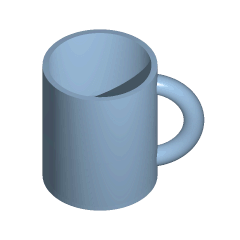
Morphing ( eng. Morphing , transformation) is a technology in computer animation , a visual effect that gives the impression of a smooth transformation of one object into another. Used in gaming and television cinema, in television advertising. It is found in three-dimensional and two-dimensional (both raster and vector ) graphics.

Technology

To create an effect, at least two images are used, on which the artist, depending on the software used, sets reference figures or key points (so-called markers or tags) that help the computer to perform correct morphing, that is, to create images of intermediate states ( interpolating available data).
Morph video to video
The technology of video morphing (so-called “video morphing in video”) as a whole differs little from static image morphing, with the exception that the artist has to adjust the location of the markers in time.
Morphing as an animation method.
Morphing is also often used to create animation , when there is no need to achieve the effect of turning one object into another, and all that is needed is to build intermediate states between two (or more) key positions of the object being animated.
Directed by James Cameron for the first time in the history of cinema used a computer special effect called "morphing", which briefly appeared in his film "The Abyss ", but was widely used in the movie " Terminator-2 ", where the terminator T-1000 performed by Robert Patrick repeatedly smoothly transformed by taking on the appearance of various people.
Software for creating morphs
- Bitmorph
- Easy morph
- Elastic Reality
- Face morpher
- Fantamorph
- Fun morph
- Magic morph
- Morphman
- Morpher
- Morpheus
- Morphbuster
- Morpheus Photo:
- Morpheus photo morpher
- Morpheus photo warper
- Morpheus Photo Mixer
- Morpheus Photo Animation Suite
- Sqirlz morph
- Winmorph
- Zbrush
- 3ds max
- Maya
- Blender 3d